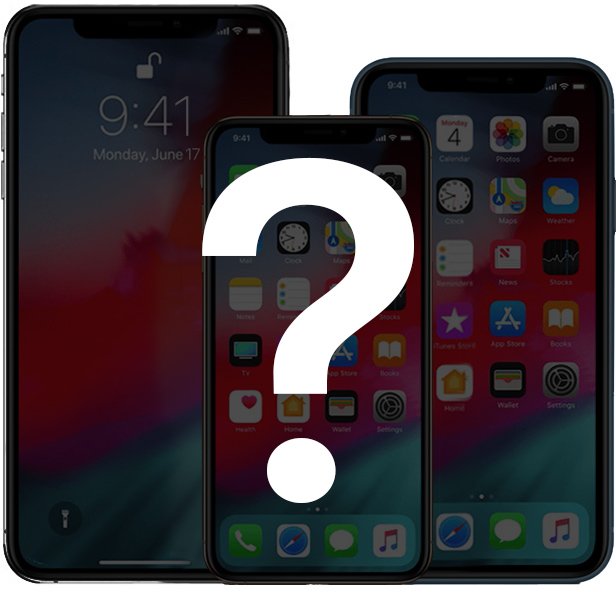New iPhone 12: Everything we know about Apple’s 2020 iPhones
The iPhone 11, iPhone 11 Pro and iPhone 11 Pro Max may make up Apple’s current iPhone lineup. But that’s not preventing anyone from looking ahead to what’s coming this fall from Cupertino.
Four iPhone 12 models coming this fall, after the iPhone SE 2 comes out this spring. Multiple iPhone 12 models will feature 5G. Two new iPhones will likely add a time of flight sensor to the three rear cameras. All new iPhones could feature OLED screens, with some models offer faster 120Hz refresh rates
iPhone 12 release date
The iPhone 11 lineup debuted at an Apple press event Sept. 10, so it stands to reason that the new iPhone 12 will follow in September 2020. (Here's a tip: keep the second week of September free and don't forget to account for Labor Day if you want to guess the specific announcement date.)
There’s always a possibility that Apple would go with an earlier launch in the year to avoid losing too much ground to rival phone makers who’ve already come out with 5G models. But that would be an unusual move for Apple, which tends to limit its phone releases to the fall. However, there seems to be a good chance a lower-cost iPhone SE successor may appear earlier. (More on that below.)
A report from Nikkei says that all iPhone 12 models will ship with 5G networking capability, which means you wouldn't have to necessarily to step up to an iPhone 12 Pro Max to enjoy faster downloads. Reportedly, Apple will work with Qualcomm and Samsung to supply its 2020 iPhones with modems from both companies that can connect to 5G networks built on both mmWave and sub-6GHz spectrum.
Thinner, more efficient OLED
A report from Korean publication The Elec states that LG is upgrading its OLED production lines at the E6 facility where the displays for the current iPhone 11 Pro are made, and from which we assume the iPhone 12’s high-end models will get their OLED displays.
The upgrades we can expect are twofold. First, the touch sensors will be integrated into the display itself, rather than requiring a separate touch layer. This makes the entire display-and-touch assembly in the phone thinner, and less expensive to manufacture.
Second, the backplane responsible for turning the individual OLED sub pixels on or off is said to be switching to low-temperature polycrystalline oxide (LTPO) technology. This uses a little less power (about 15 percent less) than the LPTS technology currently used on iPhones. Apple recently switched to OLED displays with LTPO technology in the Apple Watch in order to help prolong battery life.
5 new iPhone models in 2020
Analyst Ming-Chi Kuo issued a research note where he predicts that Apple will release five new iPhones in 2020: 5.4- and 6.1-inch models each with a dual-lens camera; 6.1- and 6.7-inch models with triple-lens cameras and “time of flight sensors”; and a 4.7-inch model.
All of the 2020 iPhones will have OLEDs, except for the 4.7-inch model, which will have an LCD. Also, the OLED-based phones will ship in the fall, while the 4.7-inch phone could be available earlier in the year.
Kuo also said that the four fall-release phones will have 5G support, with mmWave available in the markets where it can be used.
The 4.7-inch phone (considered a follow-up to the iPhone SE) will be modeled after the iPhone 8. It will have a Home button, an A13 processor, and a single-lens camera.
Apple could release four new iPhone models in the fall of 2020.
The J.P. Morgan report says that the new iPhones will support 5G, with two high-end models (one 6.1-inch and one 6.7-inch) with support for mmWave, as well as a triple-lens camera and “World facing 3D sensing.” Two low-end models (one 6.1-inch, one 5.4-inch) will not have mmWave or World facing 3D sensing, and will have a dual-lens camera.
All four iPhone models will have OLEDs. In late November, ETNews reported that Apple will be using OLED displays from Samsung that are thinner than the displays currently being used. How that will affect the overall thickness of the iPhone remains to be seen. While Apple could make the iPhone itself thinner, it’s also possible that Apple could use the newfound space to be able to implement some other new technology, or to increase the size of the battery.
The J.P. Morgan report also says that in 2021, Apple could change how it releases iPhones. The company could decide to release phones twice a year, instead of the single release in the fall.
5G for all
While 5G is practically a certainty for the 2020 iPhone, the first round of rumors claimed that the next-generation modem would be limited to the flagship models, meaning the XR (or whatever it’s called by then) would still slum it with LTE. Following the acquisition of Intel’s smartphone modem team for a cool billion dollars, those expectations have changed. Now, Ming-Chi Kuo believes that all three models will have a 5G modem on board.
The reason is simple: Apple doesn’t want to miss the boat. While 5G is limited to a few models of high-end Android phones this year, Kuo sees 5G becoming much more commonplace among Apple’s peers, leading the company to ramp up development of 5G. Specifically, he sees the prices of 5G Android smartphones “will decline to $249-349 USD in 2H20,” which will put pressure on Apple to deliver support for the speedy network in all three of next year’s iPhones. Kuo also feels that the new team of some 2,000 members of Intel’s smartphone modem division will facilitate Apple’s development of 5G.












UpgIPcRxi
XQOMoeGishJtS